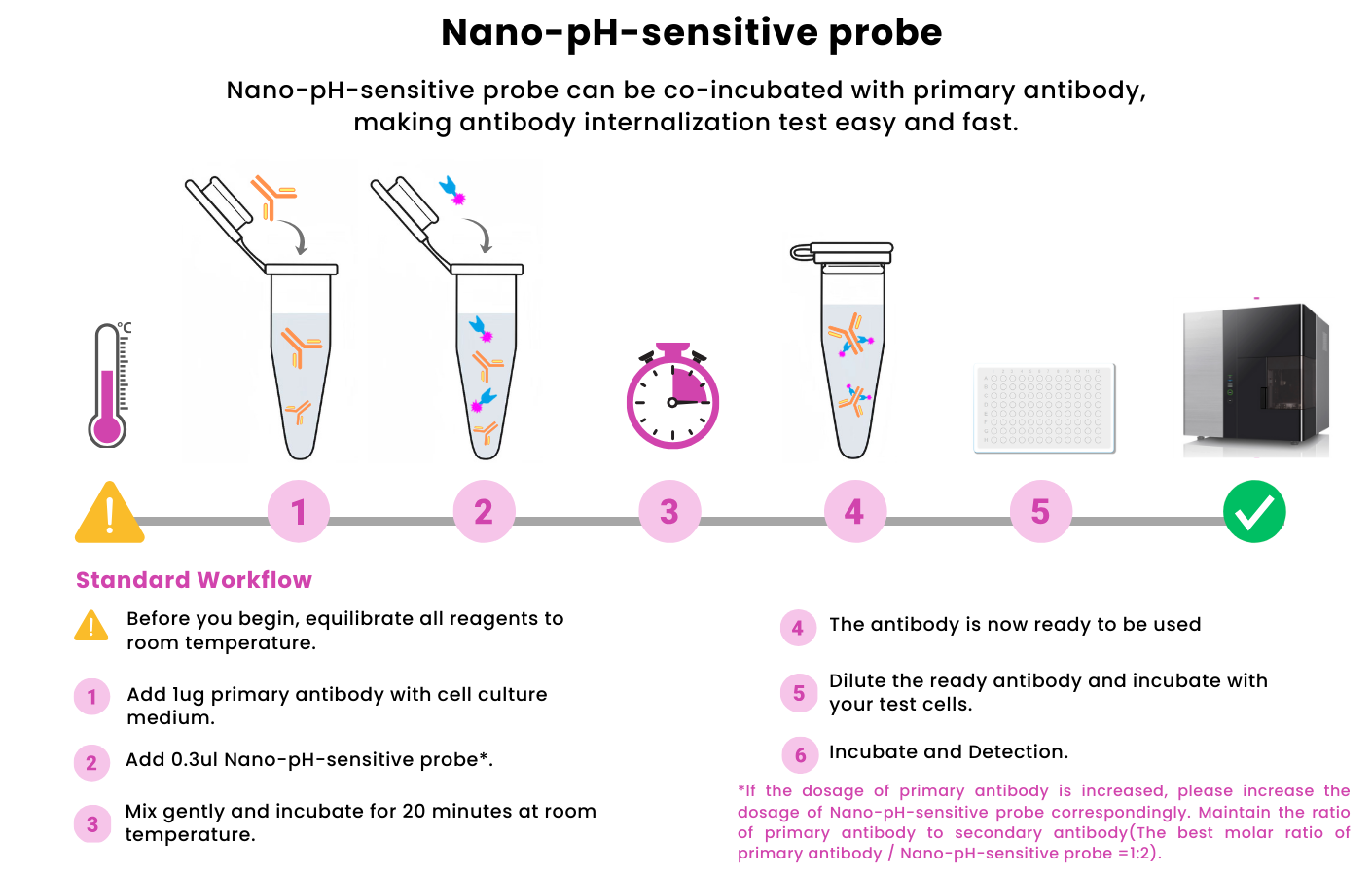High lot-to-lot consistency
Increased sensitivity and higher affinity
Animal-free production
Description:
Anti-Mouse IgG, AlpSdAbs® VHH(Deep Red630) is designed for studying on the internalization of antibodies. Anti-Mouse IgG, AlpSdAbs® VHH(Deep Red630) is based on recombinant single domain antibody to mouse IgG coupled to Deep Red630. Based on immunoelectrophoresis and/or ELISA, Anti-Mouse IgG, AlpSdAbs® VHH(Deep Red630) reacts with t mouse IgG specifically. Anti-Mouse IgG, AlpSdAbs® VHH(Deep Red630) is an effective detection tool and can be used as a useful tool for the evaluation of antibody potency prior to ADCs.
Immunogen: Recombinant mouse IgG
Host: Alpaca pacous
Isotype: VHH domain of alpaca IgG2b/2c
Conjugate: Deep Red630 (Ex: 640nm, Em: 655nm), 2 moles Deep Red630 per mole VHH
Specificity: Mouse IgG
Cross-Reactivity: No cross-reactivity with mouse IgM, rabbit, human, cynomolgus, rat, goat IgG
Purity: Recombinant Expression and Affinity purified
Concentration: 0.5mg/ml
Formation: Liquid, 10mM PBS (pH 7.4), 50% Glycerol
Storage: Store at –20 °C(Avoid freeze / thaw cycles), Protect from light
Background:
Deep Red630 has pH-sensitive fluorescence excitation/emission spectra of 610/640 nm, and its fluorescence emission increases in intensity with increasing acidity. This increase is particularly dramatic in the range pH 4.5–9, as commonly seen within endocytic vesicles. Deep Red630 is essentially dark in the extracellular environment; however, upon internalization, it elicits a bright fluorescent signal in the acidic environment of the endosomes.
VHH are single-domain antibodies derived from the variable regions of heavy chain of Camelidae immunoglobulin. The size of VHH is extremely small(<15KDa) compared to other forms of antibody fragment, which significantly increase the permeability of VHH. Thus VHH is considered of great value for research, diagnostics and therapeutics.
Antibody Internalization Test: 2ug per 10ug test antibody
Dilution factors are presented in the form of a range because the optimal dilution is a function of many factors, such as antigen density, permeability, etc. The actual dilution used must be determined empirically.



